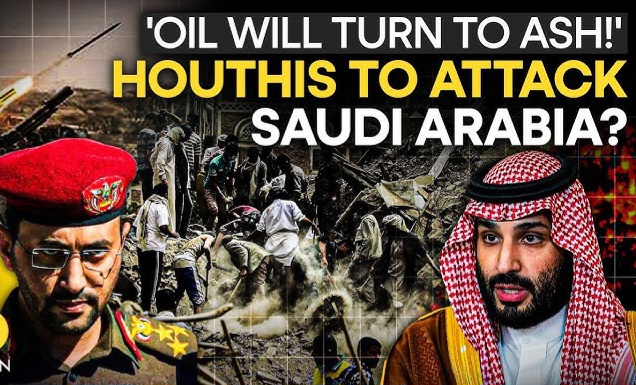Senior Houthi official Hazem al-Assad has issued a bold threat to target two of Saudi Arabia’s most strategic assets: Aramco, the kingdom’s state oil giant, and NEOM, the $500 billion megacity project championed by Crown Prince Mohammed bin Salman. The warning, delivered via media channels affiliated with the group, signals a potential new style of escalation in the long-running conflict between the Houthis and the Saudi-led coalition.
Why Now? Understanding the Houthi Motive
Hazem al-Assad’s threat should be viewed through the lens of coercive diplomacy, symbolism, and asymmetric warfare. The Houthis — officially known as Ansar Allah — have historically utilized long-range missile and drone strikes to target Saudi infrastructure, often in response to military operations in Yemen or to exert pressure during ceasefire negotiations.
There are several potential motives behind this latest declaration:
Escalation Signaling: Naming Aramco and NEOM signals that no Saudi asset is off-limits. It’s a warning designed to force Saudi Arabia to tread cautiously, especially in the context of any renewed military activity in Yemen.
Symbolic Warfare: Aramco represents Saudi Arabia’s economic lifeline, while NEOM symbolizes its future. Threatening both attacks the kingdom’s identity — past and future — in one stroke.
Leverage for Negotiations: The Houthis may be using the threat to strengthen their hand in ongoing or anticipated political talks. Raising the stakes can compel international actors to push for concessions in Yemen.
Internal Messaging: Projecting strength to domestic supporters is a common tactic. The announcement serves to bolster the Houthis’ image as a resilient, capable force in the face of a regional heavyweight.
Regional Alignment: The Houthis are closely aligned with Iran. The threat may reflect broader regional tensions, particularly amid strained Saudi-Iranian relations or in response to developments elsewhere in the region (e.g., Gaza, Lebanon, or the Red Sea.)
Aramco, the world’s most valuable oil company, operates key infrastructure that is vital not just to Saudi Arabia but to global energy markets. Previous Houthi attacks — including the 2019 strike on Abqaiq and Khurais oil processing facilities — caused global oil price spikes and temporarily halved Saudi output.
NEOM, meanwhile, is the crown jewel of Vision 2030 — a massive plan to diversify the Saudi economy beyond oil. Located in the kingdom’s northwest, NEOM is still under development, but its futuristic ambitions and geopolitical placement make it both a strategic and symbolic target.
Attacking either would not just disrupt operations; it would also strike at the credibility of the Saudi government’s modernization narrative.
Saudi Arabia’s Likely Response
Saudi Arabia has faced similar threats before and developed a layered response framework combining military defense, diplomatic engagement, and strategic messaging.
Defensive Posture Enhancement: Expect increased deployment of missile defense systems, electronic countermeasures, and drone detection around high-value targets. U.S.-supplied Patriot systems and local defense units will likely be on heightened alert.
Preemptive or Retaliatory Strikes: If intelligence indicates preparations for a launch, the Saudi Air Force could conduct preemptive strikes on Houthi missile bases or drone storage sites in Yemen. A response to any actual strike would likely be swift and punitive.
International Diplomacy: Saudi Arabia may engage the United Nations, the Gulf Cooperation Council (GCC), and Western allies to publicly denounce the threats and isolate the Houthis diplomatically.
Information and Psychological Warfare: Saudi media is already working to downplay the credibility of the threats while reaffirming the state’s capacity to defend itself and its projects.
Economic and Infrastructure Resilience: Both Aramco and NEOM are developing risk mitigation strategies, including redundant systems, hardened facilities, and alternative logistics routes.
Hazem al-Assad’s remarks are not merely rhetorical—they form part of a larger strategy of asymmetric pressure against one of the Middle East’s dominant powers. By threatening Aramco and NEOM, the Houthis are challenging both the present and future of Saudi Arabia’s power structure.
As the conflict in Yemen continues to simmer, such high-profile threats — even if symbolic — can escalate regional tensions, affect energy markets, and undermine investor confidence in the Gulf’s stability.
The coming weeks will reveal whether this is the start of a new escalation phase or part of a broader negotiation game. Either way, both Saudi Arabia and its allies will be watching — and preparing as the Houthis have shown that they are unafraid of global powers and ready to escalate their conflicts to any level.








